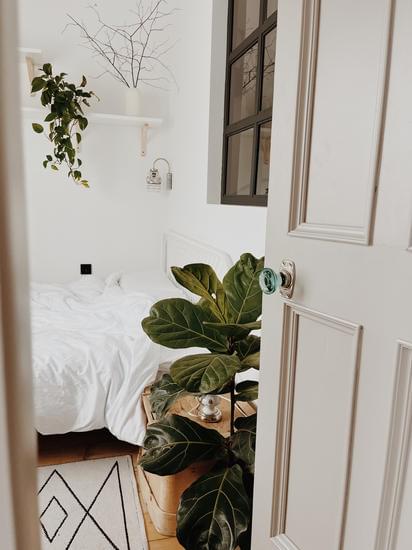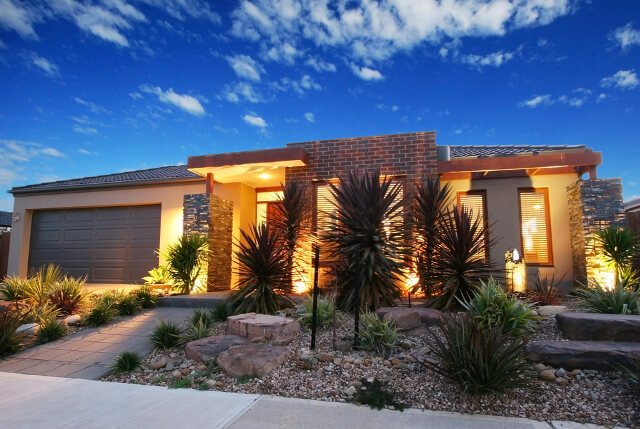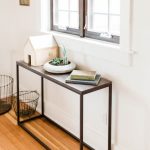Are designers using more daylight bulbs in home decorating? Lighting plays a crucial role in interior design, setting the mood and ambiance of a space. As the trend towards more natural, energy-efficient lighting gains traction, daylight bulbs have become increasingly popular in home decorating. This article will explore the importance of lighting in interior design, the benefits of daylight bulbs, and how designers are incorporating them into their projects.
In recent years, the emphasis on sustainable and eco-friendly practices has influenced various aspects of home decor, including lighting choices. Daylight bulbs mimic natural sunlight, creating a bright and inviting atmosphere in any room. Designers have taken notice of this trend and are utilizing daylight bulbs to enhance their designs and create visually appealing spaces that also prioritize energy efficiency.
As we delve into the world of lighting in home decorating, it’s important to understand the impact that different types of bulbs can have on a space. Daylight bulbs not only provide a more natural and balanced light but also have numerous benefits for both physical and mental well-being. From improving focus and productivity to positively impacting mood and overall well-being, these bulbs are becoming an integral part of modern interior design.
The Importance of Lighting in Interior Design
Lighting plays a crucial role in interior design as it can greatly influence the overall look and feel of a space. It has the power to enhance architectural features, set the mood, and highlight decorative elements within a room. Proper lighting can make a small space appear larger, create a cozy atmosphere, or add drama to certain areas. On the other hand, inadequate lighting can make even the most well-designed room look dull and uninviting.
Creating Ambiance
One of the key aspects of lighting in interior design is its ability to create ambiance. Different types of lighting – ambient, task, and accent – can be used in combination to achieve various effects. Ambient lighting provides overall illumination for a room, while task lighting focuses on specific areas such as reading nooks or kitchen countertops. Accent lighting, on the other hand, is used to highlight artwork, architectural details, or plants.
Enhancing Functionality
In addition to setting the mood and creating ambiance, lighting also enhances the functionality of a space. For instance, in kitchens and bathrooms where tasks like cooking and grooming are performed, bright task lighting is essential. In living rooms and bedrooms where relaxation is key, softer ambient lighting is more appropriate. Therefore, it’s important to consider both the aesthetic and functional aspects of lighting when designing an interior space.
Using Daylight Bulbs for Natural Light
With more emphasis being placed on energy efficiency and sustainability in interior design, designers are increasingly turning to daylight bulbs as they closely mimic natural sunlight. These bulbs provide a cooler and brighter light that can make spaces feel more open and airy. They are also known to improve color rendering by making hues appear more vibrant compared to traditional incandescent bulbs.
Understanding Daylight Bulbs and Their Benefits in Home Decorating
When it comes to home decorating, lighting plays a crucial role in setting the mood and ambiance of a space. With the increasing focus on creating well-lit and inviting interiors, designers are turning to daylight bulbs to achieve the perfect lighting for their projects. Daylight bulbs have gained popularity in recent years due to their ability to closely mimic natural sunlight, offering numerous benefits for home decorating.
The Benefits of Daylight Bulbs
Daylight bulbs, also known as full-spectrum or natural light bulbs, are designed to emit a spectrum of light that closely resembles natural daylight. This type of lighting not only provides accurate color rendering, but can also improve overall visibility and reduce eye strain. In home decorating, daylight bulbs can enhance the colors and textures of furnishings and décor, creating a more vibrant and visually appealing environment.
Energy Efficiency and Cost-Effectiveness
In addition to their aesthetic benefits, daylight bulbs are also known for their energy efficiency. Compared to traditional incandescent bulbs, daylight bulbs consume less energy while producing the same amount of light. This makes them a cost-effective option for homeowners looking to reduce their energy bills without compromising on illumination. As sustainability continues to be a key consideration in interior design, the use of energy-efficient lighting options such as daylight bulbs has become increasingly prevalent.
The Impact on Mood and Well-Being
Another advantage of incorporating daylight bulbs into home decorating is their positive impact on mood and well-being. The balanced spectrum of light produced by these bulbs can help regulate circadian rhythms and promote feelings of alertness during the day, while also contributing to relaxation in the evening. As designers prioritize creating spaces that support mental and emotional wellness, the use of daylight bulbs has become more common in residential interiors.
Trends in Home Decorating
As the role of lighting in home decorating continues to gain attention, a noticeable trend has emerged – the rise of daylight bulbs. Designers and homeowners alike are increasingly turning to these types of bulbs to create a more natural and inviting atmosphere within their living spaces.
Daylight bulbs, also known as full-spectrum or natural light bulbs, are designed to mimic the color temperature of natural daylight. This means that they emit a cooler, bluish-white light that closely resembles the light we experience outdoors during the daytime. The benefits of using daylight bulbs in home decorating are numerous, making them a popular choice among designers and homeowners alike.
Here are some reasons why designers are using more daylight bulbs in home decorating:
- Enhanced color rendering: Daylight bulbs have a high CRI (Color Rendering Index), which means they accurately render colors and make them appear more vibrant and true-to-life.
- Improved visibility: The cool, bright light from daylight bulbs can help create a well-lit environment that enhances visibility and reduces eye strain.
- Natural ambiance: By simulating natural daylight, these bulbs can help create a calming and energizing atmosphere in any room.
The shift towards using more daylight bulbs in home decorating reflects an appreciation for the impact of lighting on interior design. Designers recognize the importance of creating an aesthetically pleasing and functional space, and choosing the right lighting is crucial in achieving this goal. With its ability to enhance colors, improve visibility, and create a natural ambiance, it’s no wonder that designers are increasingly incorporating daylight bulbs into their projects.
Case Studies
Daylight bulbs are becoming increasingly popular in home decorating, and designers are incorporating them into their projects to create a more welcoming and well-lit space. Let’s take a look at some case studies of how designers are using more daylight bulbs in their projects:
- Designer A: When designing a modern living room, Designer A opted for daylight bulbs to create a bright and airy atmosphere. By strategically placing these bulbs throughout the room, they were able to enhance the natural light and even make the space appear larger. The use of daylight bulbs also complemented the minimalist design aesthetic, adding a touch of warmth without overpowering the space.
- Designer B: In a cozy bedroom redesign, Designer B chose to install daylight bulbs in both the overhead lighting fixtures and bedside lamps. This decision was made with the understanding that daylight bulbs mimic natural sunlight, which can positively impact mood and well-being. As a result, the bedroom became a tranquil retreat with an inviting ambiance.
- Designer C: For an open-concept kitchen and dining area, Designer C recognized the importance of proper lighting for both functional tasks and aesthetic appeal. Daylight bulbs were selected for their ability to accurately render colors and create an inviting environment for meal preparation and dining. The use of these bulbs also helped to showcase the vibrant hues of fresh produce on display in the kitchen.
By observing how these designers have successfully incorporated daylight bulbs into their projects, homeowners can gain valuable insight into how they can integrate this lighting solution into their own home decor endeavors. Whether it’s creating a well-lit workspace or establishing a calming atmosphere in bedrooms and living areas, the versatility of daylight bulbs makes them a desirable choice for modern interior design.
Tips for Incorporating Daylight Bulbs Into Your Own Home Decor
As designers and homeowners alike continue to prioritize natural and healthy living, the use of daylight bulbs in home decorating is becoming increasingly popular. Daylight bulbs are designed to mimic the appearance of natural daylight, providing a bright and crisp light that can help enhance the overall look and feel of a space.
One of the key benefits of using daylight bulbs in home decorating is their ability to accurately render colors. This makes them particularly well-suited for areas where color accuracy is important, such as in kitchens, bathrooms, and workspaces. Additionally, the bright, white light provided by daylight bulbs can help create a sense of energy and vitality in a room, making them ideal for use in spaces where productivity and focus are essential.
When incorporating daylight bulbs into your own home decor, it’s important to consider the tone and ambiance you want to create in each room. For areas where you want to promote alertness and concentration, such as home offices or study spaces, opt for lighting with a higher color temperature (5000-6500 Kelvin).
On the other hand, rooms intended for relaxation and unwinding, like bedrooms or living areas, may benefit from a slightly lower color temperature (3500-4500 Kelvin) to create a cozy atmosphere.
Furthermore, consider layering different sources of light throughout your space to create depth and dimension. In addition to overhead lighting, incorporate task lighting for specific activities or accent lighting to highlight architectural features or artwork. This multi-layered approach can help maximize the benefits of daylight bulbs while also adding visual interest to your home decor.
| Benefit of Daylight Bulbs | Application |
|---|---|
| Accurate color rendering | Kitchens, bathrooms, workspaces |
| Promotes energy and vitality | Home offices or study spaces |
| Creates a cozy atmosphere | Bedrooms or living areas |
The Impact of Daylight Bulbs on Mood and Well-Being
Lighting plays a crucial role in interior design, and as designers aim to create spaces that are not only aesthetically pleasing but also functional and comfortable, the type of light used is becoming increasingly important. Daylight bulbs are one of the latest trends in home decorating, and designers are turning to these bulbs for their ability to mimic natural light and offer a range of benefits for mood and well-being.
Daylight bulbs, also known as full-spectrum or natural light bulbs, are designed to replicate the color temperature of natural sunlight. These bulbs have a higher color temperature than traditional incandescent bulbs, giving off a cooler, more bluish-white light that closely resembles daylight. This type of light has been shown to have positive effects on mood and productivity, making it an attractive option for home decorating.
Incorporating daylight bulbs into home decor can have a significant impact on mood and well-being. The cooler light emitted by these bulbs can help promote alertness and concentration during the day, while still providing a warm and inviting atmosphere in the evening.
Additionally, exposure to light that mimics natural sunlight has been linked to improved sleep patterns, as it helps regulate our circadian rhythms. As a result, many designers are embracing the shift towards daylight bulbs in their projects as they recognize the impact it can have on creating healthier and more comfortable living environments.
| Benefits of Daylight Bulbs | Impact on Mood and Well-Being |
|---|---|
| Replicates natural sunlight | Promotes alertness during the day |
| Improves sleep patterns | Regulates circadian rhythms |
Conclusion
In conclusion, it is clear that the use of daylight bulbs in home decorating is on the rise, and for good reason. Designers and homeowners alike are recognizing the benefits of these bulbs in creating a well-lit, inviting space. By understanding the importance of lighting in interior design and the specific benefits of daylight bulbs, it’s evident why this trend is gaining momentum.
As seen in the case studies presented, designers are embracing the use of daylight bulbs to create stunning and functional spaces. The versatility of these bulbs allows for various applications, from brightening up a workspace to setting a cozy ambiance in a living room. By incorporating daylight bulbs into their projects, designers are able to enhance both the aesthetic and functionality of a space.
For those looking to incorporate daylight bulbs into their own home decor, there are plenty of tips and tricks to consider. From choosing the right color temperature to strategically placing fixtures, it’s possible for anyone to achieve a well-lit and welcoming atmosphere with daylight bulbs.
Additionally, the positive impact on mood and well-being that these bulbs bring makes them an even more attractive choice for home decorating. Overall, it’s clear that designers and homeowners alike are recognizing the value of using more daylight bulbs in their decorating efforts.
Frequently Asked Questions
What Light Bulbs Do Interior Designers Use?
Interior designers often prefer to use warm white or soft white light bulbs in their designs. These types of bulbs create a cozy and inviting atmosphere, which is ideal for most interior spaces. They also enhance the colors and textures of the room, making it more aesthetically pleasing.
Should I Use Daylight Bulbs in My House?
Using daylight bulbs in your house can be beneficial, especially in areas where you need bright and focused lighting, such as a home office or kitchen. Daylight bulbs mimic natural sunlight, which can help improve visibility and reduce eye strain when performing tasks that require concentration.
Is Daylight or Cool White Better for Kitchen?
The choice between daylight and cool white bulbs for the kitchen ultimately depends on personal preference and the specific design of the space. Daylight bulbs can create a bright and energizing atmosphere that is well-suited for cooking and food preparation.
On the other hand, cool white bulbs offer a clean and modern look that may complement certain kitchen styles better than daylight bulbs.

I’m thrilled to be your companion on this exciting journey through the world of home decor and design. With a passion for turning houses into homes and a keen eye for the finer details, I’m here to help you transform your living spaces into beautiful, functional, and meaningful havens.





